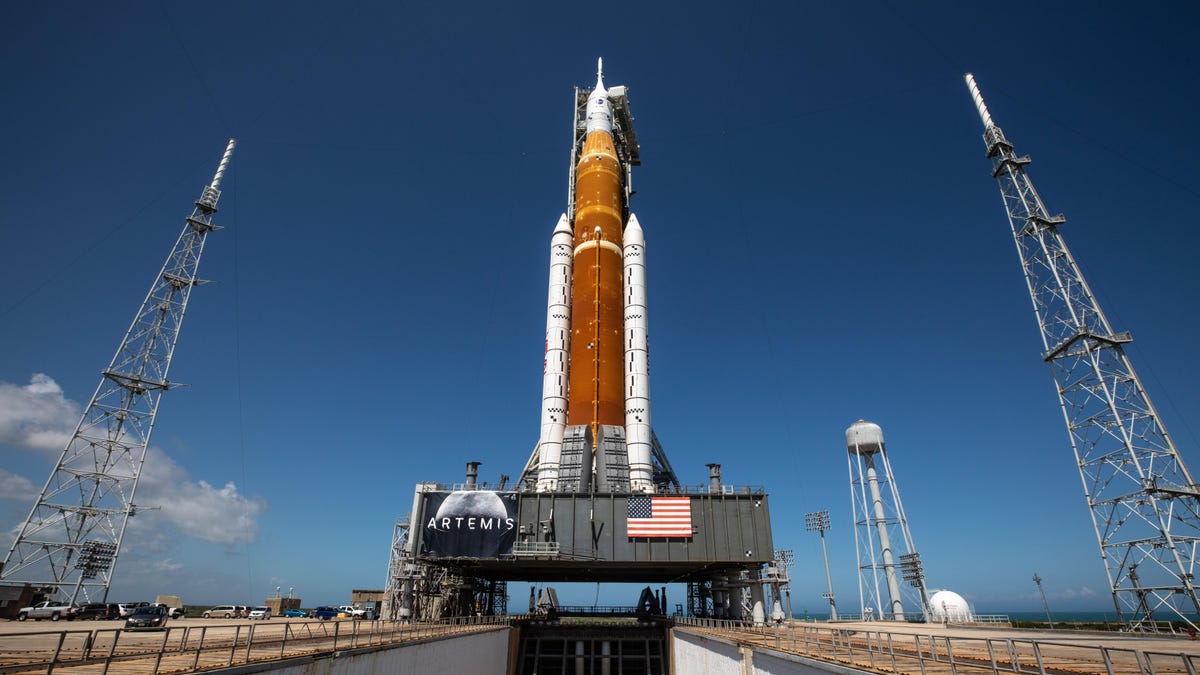
NASA’s goal to reduce costs on its Space Launch System (SLS) rocket by switching to a commercial service contract was dismissed in the latest audit of the space agency’s ongoing Moon program.
The office of NASA’s inspector general (OIG) released a report on Thursday that referred to the space agency’s goal of saving 50% on the future launches of SLS as “highly unrealistic.” The report estimated that a single SLS will cost more than $2 billion to produce for the first 10 launches.
Advertisement
The SLS rocket launched on November 16, 2022 for the Artemis 1 mission, sending an uncrewed Orion spacecraft around the Moon and back. The 5.75-million-pound rocket is essential to NASA’s Moon program, with plans to launch Artemis 2 in late 2024 followed by the first crewed landing on the lunar surface as early as 2025 and another mission tentatively set for 2028.
Advertisement
NASA has come under scrutiny for the mounting costs of its SLS rocket. The OIG performed an audit from February 2022 through April 2023. A report released in May found that NASA’s overall investment in its Artemis Moon program is projected to reach $93 billion from 2012 through 2025, of which the costs of SLS alone represent $23.8 billion spent through 2022. That’s $6 billion in cost increases for the rocket, in addition to six years in schedule delays above NASA’s original projections, the report stated.
Advertisement
The space agency has been trying to reduce the cost of its Moon rocket moving forward, suggesting operating SLS under a launch service model. The service contract would allow the space agency to purchase future launches and payload capabilities from a contractor who would own, operate, and integrate the rocket.
“NASA’s goal is to achieve a 50 percent cost savings in producing flight-ready SLS vehicles, which by our calculation would reduce the contract cost of a single SLS Block 1B rocket from a current production cost of at least $2.5 billion per launch vehicle to $1.25 billion,” the report stated. “According to Agency officials, this goal is aspirational and not based on actual analysis, and in our estimation is highly unrealistic.”
Advertisement
The report added, however, that moving SLS production from separate cost-reimbursable contracts to a combined commercial services approach could potentially reduce SLS production costs in the long run. In other words, switching from having many separate pay-as-you-go deals to one all-inclusive business plan might save money on making the SLS in the future.
With the launch of its Artemis 2 mission on the horizon, NASA can’t risk jeopardizing its Moon program. The space agency wants to establish a sustainable human presence on the lunar surface, and that means its rocket launches from the ground need to be sustainable as well.
Advertisement
Want to know more about humanity’s next giant leap in space? Check out our full coverage of NASA’s Artemis Moon program, the new Space Launch System (SLS) rocket and Orion spacecraft, the recently concluded Artemis 1 mission around the Moon, the four-person Artemis 2 crew, NASA and Axiom’s Artemis Moon suit, and the upcoming lunar Gateway space station. And for more spaceflight in your life, follow us on X (formerly Twitter) and bookmark Gizmodo’s dedicated Spaceflight page.
Services Marketplace – Listings, Bookings & Reviews